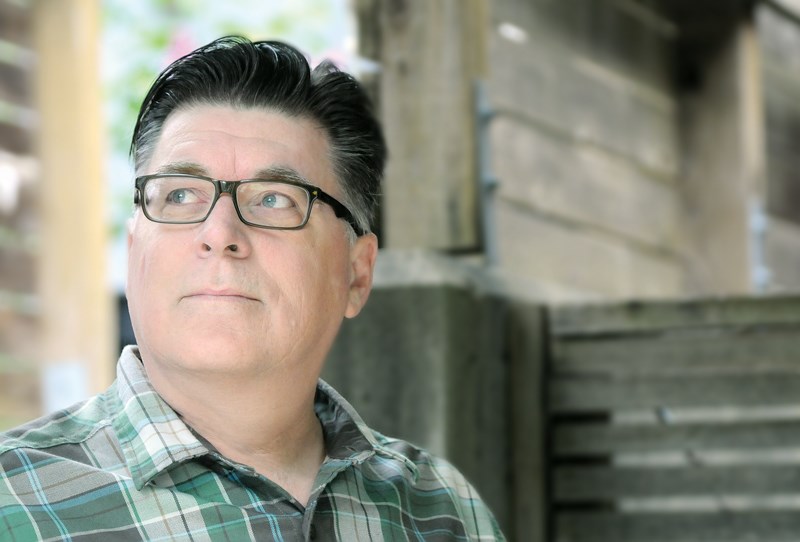The Lower Mainland is looking a little thin around the middle these days, at least as far as development is concerned.
That’s the word from a number of urban planners, home designers, developers and community volunteers who met at North Vancouver District Public Library’s Lynn Valley branch Wednesday evening to discuss the dearth of the “missing middle” – housing options that fall between the single-family home and the high-density towers in town centres.
The event was organized by Metro Conversations, a group co-founded by District of North Vancouver Coun. Mathew Bond and aimed at carrying the discussions about urban issues Vancouver is tackling out to the wider suburbs.
The focus of Tuesday’s discussion was “The Sacred Single Family Home: What are we trying to protect and why?”
“Many of the rules we’ve written over decades get in the way of a natural evolution of communities and we get caught up in the conflict between ideas of ‘We love this neighbourhood and what it represents’... and we fear what’s usually called the Yaletownization of neighbourhoods, which is code for a tower form of development,” said Neal LaMontagne, planner and adjunct professor at UBC and Langara College. “There’s a whole range in between.”
For a great many on the North Shore, the single-family home is a double-edged sword, said Krista Tulloch, a member of District of North Vancouver’s official community plan implementation committee and volunteer since 2009.
“The idea of single-family homes was something we heard was very, very dear as a core value for a large portion of our housing form but I also had the chance to hear from many people who were downsizing or wanting to move family members closer or keep their children on the North Shore who also expressed the need for some different types of housing forms,” she said.
According to data from the last census, single-family homes make up 52 per cent of all dwellings in the district.
About 29 per cent are considered “other” ground-oriented homes, which may include duplexes or rowhouses. Only six per cent of dwellings in the district are in apartments of more than five storeys.
Cameron Maltby, a designer who specializes in those types of homes, said one of the greatest hurdles for property owners to clear isn’t so much the community worried about the character of their neighbourhood but, rather, getting bureaucrats to get over the “stigma” that comes for anything but single-family homes. Maltby lives in a duplex he designed on 23rd Street, near Lonsdale, to accommodate his family as well as his parents and one rental unit.
“(It) fits within the street and the neighbourhood quite nicely. I think the scale is no different than any of the other single-family houses in the neighbourhood,” he said, noting that most new homes are much, much larger and contain only one family.
The sentiment was echoed by Michael Geller, an architect and developer.
“Most builders will build that single-family house and sell it for $3.5 million rather than go through the aggravation and heartache to build something that’s more creative and perhaps much more needed,” he said.
Those types of projects should be fast-tracked for approval, Geller added.
Talk of infill or “gentle density” invariably brings up the worries about more cars and traffic, already sore points on the North Shore. But, Tulloch said that line of thought may be counterproductive as forcing people to choose between the extremes of small units in condo towers and detached homes just drives them – literally – out of the community.
“The challenge is there is nowhere to grow. Our population mix has shifted and folks are forced out of the community when they have that first or second child and they can no longer make a go of it in a one-bedroom apartment,” she said. “Many of those people who are now driving are people who tried to establish themselves here and in fact have jobs here, like teachers or firefighters or architects.”
But with large single-family lots selling for $1.5 million, land costs alone mean that adding more of the missing middle won’t be the silver bullet to solve the Lower Mainland’s affordability crisis, the panel members agreed.
“We’re obviously not talking about affordability that caters to my daughter and her friends who are earning $50,000 or $60,000 or less,” Geller said. “This isn’t going to create the true, deep affordability that we so desperately need in the region.”
Following the meeting, Bond agreed and said government funding will be needed to create true affordability housing. But, he added, diversifying the housing stock is still a laudable goal.
“I’m not an economist but, in Vancouver, the opinion is no, you can’t build your way to affordability. But that doesn’t mean that doing nothing is going to make things any better either. I think you can give some options to people and let families like mine make a choice,” he said.
Beyond a failure to include enough variety of housing, Bond said the district’s OCP’s “hard lines” concentrating density in town centres may also have the unintended consequence of putting residents’ older, more affordable purpose-built rental buildings at risk of demoviction.
“If people are worried about those things and what we’re doing right now isn’t solving them, then we need to look at different solutions. That’s what this conversation is about,” he said.



